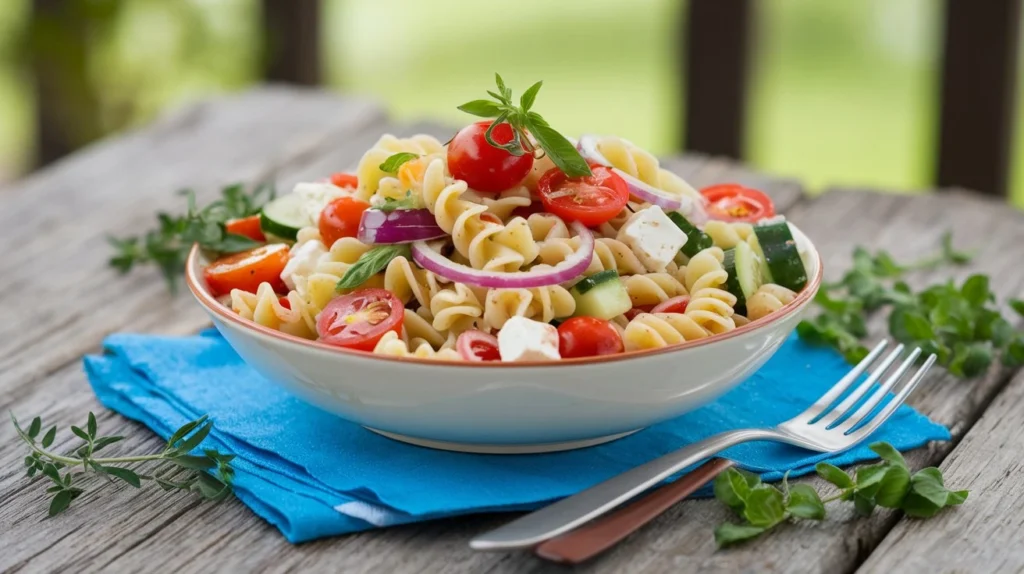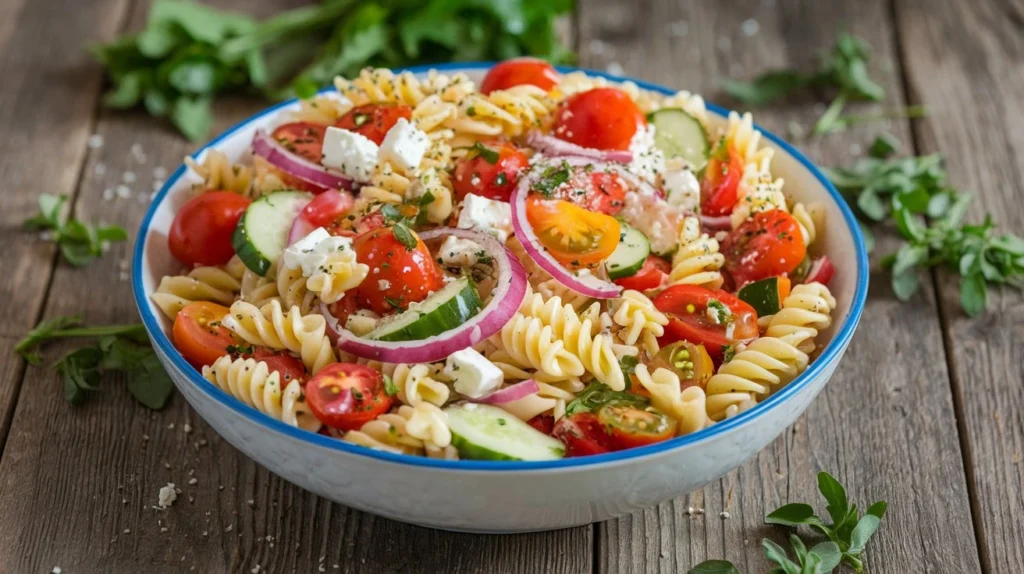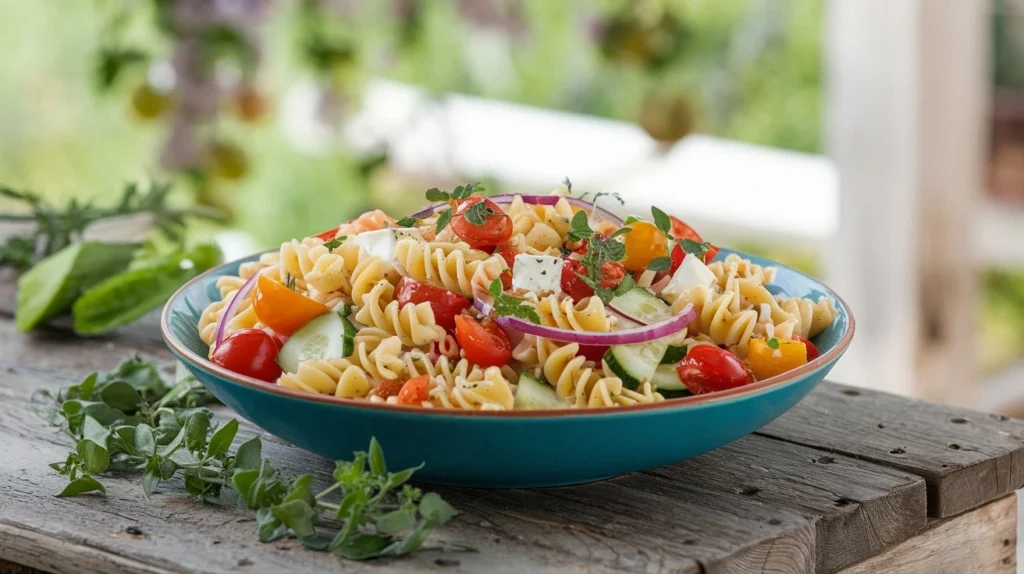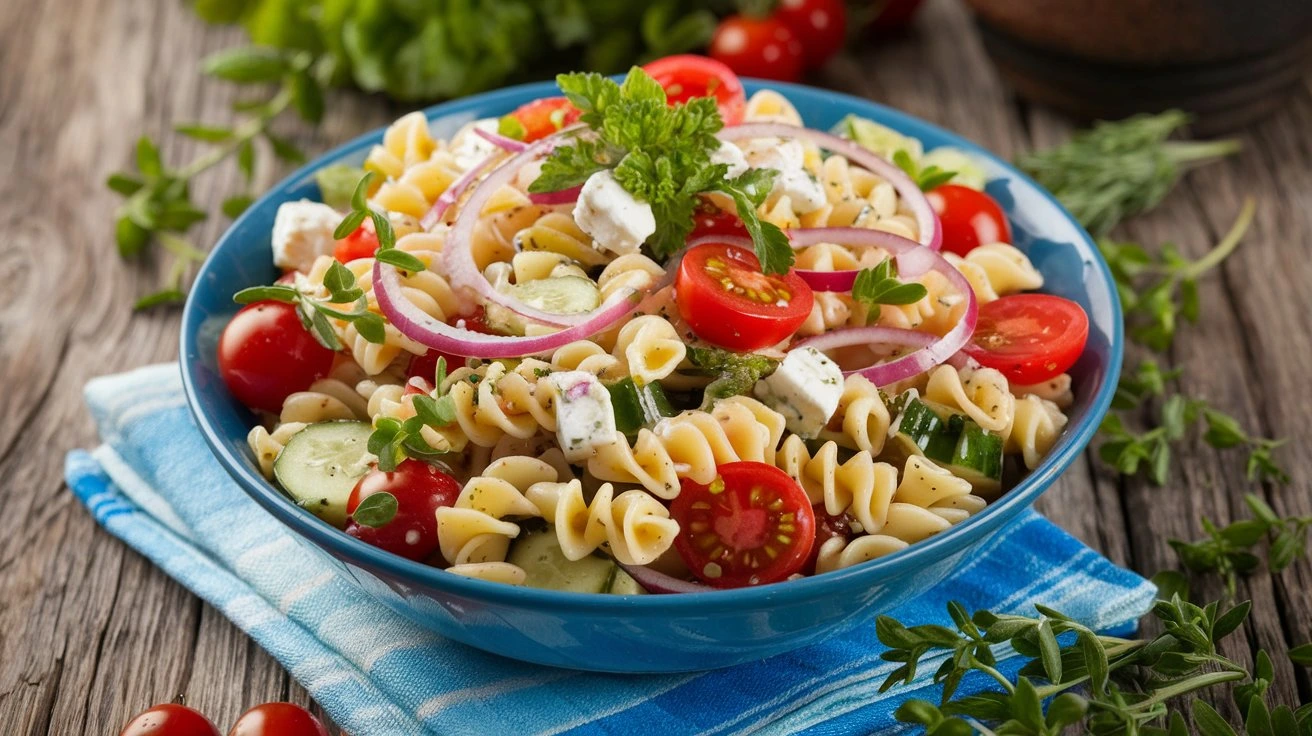When it comes to pasta, ditalini holds a special place in the culinary world. You might be wondering what makes this small, tube-shaped pasta so versatile and beloved in various dishes. Ditalini, meaning “little thimbles” in Italian, is not just another pasta type; it’s a delightful ingredient that can elevate your meals, whether you’re preparing a hearty soup, a vibrant salad, or a comforting casserole.
In this guide, you’ll learn everything you need to know about cooking ditalini pasta, from the best methods to the ideal cooking times. By the end of this article, you’ll feel confident in your ability to incorporate ditalini into your cooking repertoire, making your meals not only tastier but also more fulfilling. Let’s dive deeper into the world of ditalini pasta and explore its many culinary possibilities.
Why Choose Ditalini Pasta?
- Versatility: Ditalini works well in a variety of dishes, from soups to salads and baked casseroles.
- Texture: Its small size and tubular shape allow it to absorb flavors, making each bite satisfying.
- Preparation Ease: Ditalini cooks quickly, making it a convenient option for busy weeknight dinners.
Culinary Uses of Ditalini
- Soups: Perfect for adding substance to broths and vegetable soups.
- Salads: Provides a delightful chewiness in cold pasta salads, complementing fresh vegetables.
- Casseroles: Its shape makes it ideal for baked dishes, where it holds up well to sauces and cheese.
As you read through this article, you’ll gain valuable insights into the best practices for cooking ditalini pasta, ensuring that you can serve up delicious meals that impress your family and friends. From understanding the right cooking techniques to trying out scrumptious recipes, you’re about to embark on an exciting culinary journey with ditalini pasta.
Table of Contents
Understanding Ditalini Pasta
To truly appreciate ditalini pasta, it helps to understand its unique characteristics and culinary potential. You may be wondering what sets this pasta apart from others in the vast world of Italian cuisine. Ditalini, with its small, cylindrical shape, is not just visually appealing; it is also highly functional in various dishes.
What is Ditalini Pasta?
- Shape and Size: Ditalini is a short, tubular pasta, typically measuring about 1/2 inch in length and 1/4 inch in diameter. Its name, derived from the Italian word for “little thimbles,” perfectly captures its petite form.
- Texture: This pasta’s smooth surface allows it to hold sauces well, making every bite flavorful. The shape also provides a delightful chewiness that enhances the eating experience.
The Origin of Ditalini Pasta
- Italian Roots: Ditalini hails from the Campania region of Italy, where it has been a staple for generations. You might discover that it is particularly popular in Neapolitan cuisine, often featured in comforting dishes.
- Culinary Traditions: Traditionally, ditalini is used in hearty soups like minestrone, where it complements the vegetables and broth beautifully. Its ability to absorb flavors makes it a favorite in many Italian households.
Nutritional Profile
Understanding the nutritional content of ditalini pasta can help you make informed choices for your meals:
- Calories: One cup of cooked ditalini typically contains around 200 calories, making it a moderate option for a satisfying meal.
- Carbohydrates: This pasta is rich in carbohydrates, providing a quick source of energy. It usually contains about 42 grams per serving.
- Protein: While not a complete protein, ditalini offers around 7 grams per cup, especially when paired with protein-rich ingredients like beans or meats.
- Vitamins and Minerals: Ditalini pasta often contains essential nutrients such as iron and B vitamins, contributing to a balanced diet.
Why You Should Use Ditalini Pasta
- Versatility in Recipes: Whether you’re crafting a warming soup, a refreshing salad, or a baked dish, ditalini can adapt to your culinary needs.
- Easy to Cook: With a quick cooking time of just 7-10 minutes, ditalini is an excellent choice for busy weeknights or last-minute meals.
- Kid-Friendly: Its small size and fun shape make ditalini appealing to children, encouraging them to enjoy their meals.
By understanding ditalini pasta’s unique qualities and how it fits into various recipes, you can unlock new culinary possibilities in your kitchen. As you explore its uses further, you’ll discover how this simple pasta can bring joy and flavor to your dining table.
Best Cooking Methods for Ditalini Pasta

When it comes to preparing ditalini pasta, the cooking method you choose can significantly impact the final dish. You want to ensure that your pasta is cooked perfectly, maintaining its delightful texture while absorbing the flavors of your ingredients. Below, you’ll find various cooking methods, each with its own benefits, so you can select the one that best suits your culinary needs.
1. Boiling Ditalini Pasta
Boiling is the most common and straightforward method for cooking ditalini. This method allows the pasta to cook evenly while maintaining its characteristic bite.
Steps to Boil Ditalini:
- Bring Water to a Boil: Start with a large pot filled with water. Use about 4 quarts of water for each pound of pasta. Bringing the water to a rolling boil is crucial for even cooking.
- Add Salt: Once the water is boiling, add a generous amount of salt (approximately 1 tablespoon per 4 quarts). This enhances the pasta’s flavor.
- Add Ditalini: Carefully add the ditalini to the boiling water. Stir gently to prevent sticking.
- Cooking Time: Let it cook for about 7 to 10 minutes. To ensure it’s cooked to your preference, taste a piece a minute or two before the recommended time.
- Drain and Rinse: Once done, drain the pasta in a colander. Rinsing it briefly under cold water can stop the cooking process, especially if you plan to use it in a salad.
2. Stovetop Skillet Method
Using a stovetop skillet is an excellent alternative that allows you to combine cooking the pasta with your sauce in one pan, enhancing flavor absorption.
How to Cook Ditalini in a Skillet:
- Prepare Your Sauce: Begin by warming your sauce in a big skillet. You can use tomato-based sauces, broths, or creamy mixtures.
- Add Water and Ditalini: Once the sauce is warm, add enough water to cover the pasta (about 2 cups per cup of ditalini). Then, stir in the ditalini.
- Simmer: Bring the mixture to a gentle simmer. Cook for 8 to 10 minutes, stirring now and then. This method allows the pasta to soak up the flavors of the sauce as it cooks.
- Adjust Consistency: If the sauce becomes too thick, you can add a bit more water or broth until you reach the desired consistency.
3. Instant Pot Method
For those looking for a quick and efficient way to prepare ditalini, the Instant Pot can be a game changer. This method is perfect for busy weeknights.
Steps for Cooking in an Instant Pot:
- Add Ingredients: Place 1 cup of ditalini, 2 cups of water or broth, and any seasonings or vegetables in the Instant Pot.
- Set Cooking Time: Close the lid and set the pressure to high for about 4 minutes.
- Quick Release: Once the timer goes off, carefully perform a quick release of the pressure. This helps prevent overcooking.
- Fluff and Serve: Open the lid, fluff the pasta with a fork, and it’s ready to serve!
4. Oven-Baking Method
Baking ditalini is an excellent option for creating a comforting casserole. This method allows for a crispy top layer while keeping the pasta tender.
How to Bake Ditalini:
- Preheat Oven: Set your oven to 375°F (190°C).
- Prepare the Casserole: In a baking dish, combine cooked ditalini with your choice of sauce, vegetables, and cheese. Mix well.
- Cover and Bake: Cover the dish with foil to prevent drying out and bake for about 20-25 minutes. For a crispy top, remove the foil in the last 5 minutes.
- Serve Hot: Let it cool slightly before serving to allow the flavors to meld.
Summary of Cooking Methods
| Cooking Method | Time (Minutes) | Key Benefits |
|---|---|---|
| Boiling | 7-10 | Quick and easy; great for soups |
| Stovetop Skillet | 8-10 | Combines cooking with sauce |
| Instant Pot | 4 | Fast and efficient for busy nights |
| Oven-Baking | 20-25 | Creates a comforting, crispy dish |
By exploring these different cooking methods for ditalini pasta, you can choose the one that best fits your schedule and the dishes you want to create. Each method brings its own unique qualities, allowing you to enjoy the deliciousness of ditalini in various forms.
Perfect Cooking Times for Ditalini Pasta

Understanding the ideal cooking times for ditalini pasta is essential for achieving that perfect texture and flavor in your dishes. You want your pasta to be tender yet firm, ensuring it complements whatever sauce or ingredients you choose to pair it with. Below, you’ll find detailed insights into the cooking times for various methods, along with tips to help you cook ditalini pasta to perfection.
General Cooking Time Guidelines
The cooking time for ditalini typically falls within a specific range, influenced by the method used. Here’s a quick overview:
- Boiling: 7 to 10 minutes
- Stovetop Skillet: 8 to 10 minutes
- Instant Pot: 4 minutes at high pressure
- Oven-Baking: 20 to 25 minutes (after initial cooking)
1. Boiling Ditalini Pasta
When boiling ditalini, timing is crucial. You want it to be just right—cooked through but still retaining a slight firmness, known as “al dente.”
- Timing Tips:
- Start checking for doneness at around 7 minutes, especially if you prefer a firmer texture.
- If you enjoy a softer pasta, you can allow it to cook for up to 10 minutes, but be cautious not to exceed this time to avoid mushiness.
2. Stovetop Skillet Method
Cooking ditalini in a skillet allows the pasta to absorb flavors from the sauce, enhancing the overall taste.
- Cooking Time:
- Typically, you should plan for about 8 to 10 minutes.
- Monitor the pasta closely and stir occasionally to ensure even cooking and prevent sticking.
3. Instant Pot Method
Using an Instant Pot is a fantastic way to save time without sacrificing quality.
- Quick Cooking:
- Set the pressure for 4 minutes, which is perfect for cooking ditalini without overdoing it.
- Make sure to perform a quick release after the timer goes off to prevent the pasta from continuing to cook in residual heat.
4. Oven-Baking Method
Baking ditalini in a casserole is a wonderful way to create a comforting meal, but it involves a two-step process.
- Total Time:
- After boiling the pasta for about 5 to 7 minutes, combine it with your ingredients in a baking dish and cover it with foil.
- Bake in a preheated oven at 375°F (190°C) for 20 to 25 minutes. Remove the foil in the last 5 minutes to allow for a crispy top.
Summary of Cooking Times
| Cooking Method | Cooking Time (Minutes) | Best For |
|---|---|---|
| Boiling | 7-10 | Soups, salads |
| Stovetop Skillet | 8-10 | One-pan meals, sauces |
| Instant Pot | 4 | Quick meals, minimal cleanup |
| Oven-Baking | 20-25 (plus boiling) | Casseroles, baked dishes |
Final Tips for Cooking Ditalini
- Taste Test: The best way to ensure perfect doneness is to taste the pasta a minute or two before the indicated time. This allows you to adjust based on your preference.
- Rinsing: If you’re using the pasta in a salad, rinse it under cold water after draining to stop the cooking process.
- Sauce Consistency: Remember that the cooking time can also depend on the thickness of your sauce. Thicker sauces may require longer simmering times to coat the pasta properly.
By mastering the cooking times for ditalini pasta, you can elevate your dishes and ensure that every meal is a delightful experience. With practice, you’ll become more attuned to the ideal timing for your specific preferences, making ditalini a go-to ingredient in your kitchen.
Delicious Recipes with Ditalini Pasta

Ditalini pasta is incredibly versatile, making it a fantastic choice for various dishes. Whether you’re in the mood for a comforting soup, a refreshing salad, or a hearty casserole, ditalini can adapt to your culinary desires. Below, you’ll find a selection of delightful recipes that showcase the unique qualities of this pasta, allowing you to create meals that are not only satisfying but also bursting with flavor.
1. Classic Ditalini Soup
A hearty soup is one of the quintessential ways to enjoy ditalini pasta. This recipe combines fresh vegetables and aromatic broth, creating a dish that’s both nourishing and comforting.
Ingredients Table:
| Ingredient | Quantity |
|---|---|
| Ditalini Pasta | 1 cup |
| Vegetable Broth | 4 cups |
| Carrots | 1 cup, diced |
| Celery | 1 cup, diced |
| Onion | 1 medium, chopped |
| Olive Oil | 2 tablespoons |
| Garlic | 2 cloves, minced |
| Bay Leaf | 1 |
| Salt and Pepper | To taste |
Instructions:
- Sauté Vegetables: Cook the vegetables by heating olive oil in a big pot over medium heat. Add chopped onions, carrots, and celery, and cook until they soften.
- Add Garlic: Mix in the minced garlic and cook for another minute until it smells good.
- Pour in Broth: Add the vegetable broth and bay leaf, bringing the mixture to a boil.
- Cook Ditalini: Once boiling, add the ditalini pasta. Reduce heat and simmer for about 10 minutes or until the pasta is tender.
- Season and Serve: Remove the bay leaf, season with salt and pepper, and serve hot.
2. Ditalini Pasta Salad
This vibrant pasta salad is perfect for potlucks or as a side dish. It combines fresh vegetables and a zesty dressing, making it a refreshing choice.
Ingredients Table:
| Ingredient | Quantity |
|---|---|
| Ditalini Pasta | 2 cups |
| Cherry Tomatoes | 1 cup, halved |
| Cucumber | 1 medium, diced |
| Red Onion | 1/4 cup, sliced |
| Feta Cheese | 1 cup, crumbled |
| Olive Oil | 3 tablespoons |
| Red Wine Vinegar | 2 tablespoons |
| Italian Seasoning | 1 teaspoon |
| Salt and Pepper | To taste |
Instructions:
- Cook Ditalini: Bring a pot of salted water to a boil, add ditalini, and cook according to package instructions. Drain and let cool.
- Mix Vegetables: In a large bowl, combine the cherry tomatoes, cucumber, red onion, and feta cheese.
- Prepare Dressing: In a separate bowl, whisk together olive oil, red wine vinegar, Italian seasoning, salt, and pepper.
- Combine: Add the cooled ditalini to the vegetable mixture and pour the dressing over. Toss to combine and refrigerate for at least 30 minutes before serving.
3. Baked Ditalini Casserole
This baked dish is perfect for a family dinner, combining the comforting flavors of cheese and tomato sauce with the delightful texture of ditalini.
Ingredients Table:
| Ingredient | Quantity |
|---|---|
| Ditalini Pasta | 2 cups |
| Marinara Sauce | 3 cups |
| Mozzarella Cheese | 2 cups, shredded |
| Parmesan Cheese | 1/2 cup, grated |
| Italian Sausage | 1 pound, cooked and crumbled |
| Spinach | 2 cups, fresh or frozen |
Instructions:
- Preheat Oven: Preheat your oven to 375°F (190°C).
- Cook Ditalini: Boil ditalini for about 5-7 minutes, then drain.
- Mix Ingredients: In a large bowl, combine the cooked ditalini, marinara sauce, Italian sausage, spinach, and half of the mozzarella cheese.
- Transfer to Baking Dish: Pour the mixture into a greased baking dish and top with the remaining mozzarella and parmesan cheese.
- Bake: Seal with foil and bake for 20 minutes. Take off the foil and bake for 10 more minutes until the cheese is bubbly and golden.
4. Ditalini with Pesto and Vegetables
This quick and easy recipe makes use of fresh pesto and seasonal vegetables, resulting in a bright and flavorful dish.
Ingredients Table:
| Ingredient | Quantity |
|---|---|
| Ditalini Pasta | 2 cups |
| Pesto Sauce | 1 cup |
| Bell Peppers | 1 cup, diced |
| Zucchini | 1 medium, diced |
| Cherry Tomatoes | 1 cup, halved |
| Olive Oil | 1 tablespoon |
| Salt and Pepper | To taste |
Instructions:
- Cook Ditalini: Boil the ditalini in salted water until al dente, then drain.
- Sauté Vegetables: Heat olive oil in a skillet to sauté the vegetables. Add bell peppers and zucchini, cooking until tender. Add cherry tomatoes last for a minute.
- Combine with Pesto: In a large bowl, mix the cooked ditalini with the sautéed vegetables and pesto sauce. Toss gently until well combined.
- Serve Warm: Adjust seasoning with salt and pepper before serving.
Conclusion
These delicious recipes highlight the versatility of ditalini pasta, allowing you to enjoy it in various forms, from soups to salads and casseroles. By incorporating ditalini into your meals, you can create comforting, flavorful dishes that are sure to satisfy your family and friends. Try these recipes and explore the wonderful world of ditalini pasta in your kitchen!
(FAQs)
When it comes to ditalini pasta, you may have questions about its uses, cooking methods, and nutritional benefits. This section addresses common inquiries to help you better understand this delightful ingredient and how to incorporate it into your meals.
1. What is Ditalini Pasta?
Ditalini pasta is a small, tubular pasta shape, typically measuring around 1/2 inch in length. Its name translates to “little thimbles” in Italian, and its design makes it perfect for holding onto sauces and flavors. Often used in soups, salads, and casseroles, ditalini pasta is a staple in many Italian dishes.
2. How Do I Cook Ditalini Pasta?
Cooking ditalini is straightforward. Here are some quick steps to follow:
- Boiling Method:
- Heat a pot of salted water until it boils vigorously.
- Add ditalini and cook for about 7 to 10 minutes, depending on your preferred texture.
- Taste a piece a minute or two before the recommended time to ensure it’s cooked to your liking. Drain and rinse if necessary.
- Skillet Method:
- Combine with sauce and cook for approximately 8 to 10 minutes, stirring frequently.
- Instant Pot:
- Cook for 4 minutes on high pressure, then perform a quick release.
3. What Are Some Popular Dishes Made with Ditalini?
Ditalini’s versatility allows it to shine in various dishes, including:
- Soups: Perfect for minestrone or vegetable soups, where it adds heartiness.
- Salads: Great in pasta salads, mixed with fresh vegetables and a light dressing.
- Casseroles: Works well in baked dishes, combined with sauces and cheese for a comforting meal.
4. How Do I Prevent Ditalini from Sticking Together?
To prevent ditalini from clumping, consider these tips:
- Use Plenty of Water: Cooking in a large pot with ample water helps keep the pasta separated.
- Stir Occasionally: Gently stirring the pasta during cooking can prevent it from sticking.
- Rinse After Cooking: If you’re using it in salads or cold dishes, rinsing under cold water after draining can stop the cooking process and reduce stickiness.
5. Is Ditalini Pasta Healthy?
Ditalini pasta can be part of a balanced diet. Here are some nutritional highlights:
- Carbohydrates: A good source of energy, with approximately 42 grams of carbs per serving.
- Protein: Contains about 7 grams of protein per cup, especially beneficial when paired with protein-rich ingredients.
- Nutrient-Rich: Often made from durum wheat, it provides essential vitamins and minerals.
6. Can I Substitute Ditalini with Other Pasta Shapes?
If you don’t have ditalini on hand, you can substitute it with other small pasta shapes such as:
- Orzo: Orzo is a pasta shaped like rice, perfect for soups and salads.
- Farfalle: Bow-tie pasta that can add a fun shape to your dishes.
- Macaroni: A classic choice for baked dishes and salads.
7. How Long Does Cooked Ditalini Last?
Cooked ditalini pasta can typically be stored in the refrigerator for 3 to 5 days. To maintain freshness:
- Store in an Airtight Container: This helps to keep the pasta moist and prevents it from drying out.
- Reheat Gently: When reheating, add a splash of water or sauce to prevent it from becoming too dry.
Conclusion
Understanding ditalini pasta can enhance your cooking experience and open the door to new culinary adventures. With its versatility and ability to absorb flavors, ditalini is a fantastic addition to your kitchen. Whether you’re making a comforting soup or a vibrant salad, you’re sure to enjoy the delightful taste and texture that ditalini brings to your meals. If you have more questions or need further guidance, don’t hesitate to explore more recipes and cooking tips!
Conclusion
As you explore the world of ditalini pasta, you’ll find that this small, yet mighty ingredient can transform your meals in numerous ways. From comforting soups to vibrant salads and hearty casseroles, ditalini’s adaptability makes it a valuable addition to any kitchen. You now have the knowledge to cook ditalini perfectly, experiment with various recipes, and enjoy its delightful taste and texture.
Why Ditalini Should Be in Your Pantry
- Versatility: You can use ditalini in a wide range of dishes, making it a staple for any occasion—be it a family dinner, a potluck, or a cozy night in.
- Quick Cooking: With various cooking methods at your disposal, you can prepare ditalini pasta in no time, perfect for busy weeknights or last-minute meals.
- Flavor Absorption: Its unique shape allows it to absorb sauces and flavors beautifully, enhancing the overall taste of your dishes.
Encouragement to Experiment
Now that you’re equipped with recipes and tips, don’t hesitate to get creative in the kitchen. Try pairing ditalini with different sauces, vegetables, and proteins to discover new flavor combinations. You might even create your own signature dish that everyone in your family will love.
Final Thoughts
Incorporating ditalini pasta into your meals not only adds variety but also brings comfort and satisfaction to your dining experience. As you prepare dishes featuring this delightful pasta, remember that the joy of cooking lies in exploration and creativity. So, gather your ingredients, invite a few friends or family to join you, and embark on a culinary adventure with ditalini pasta. Enjoy every bite and savor the memories you create along the way!
